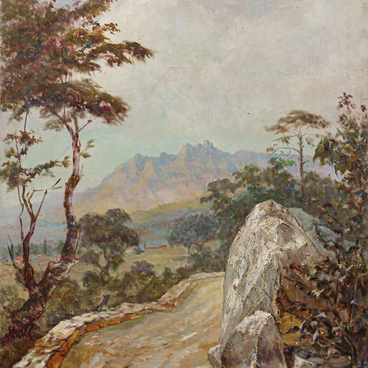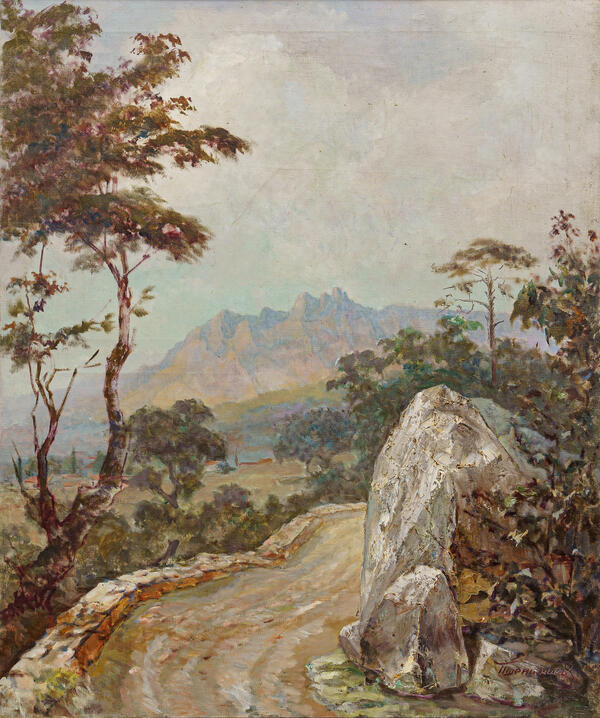Vasily Sergeyevich Pshenichnikov was born in Moscow in 1882. The son of a military man, he received his primary education at the 2nd Moscow Cadet Corps. Later, he graduated from the Odessa Junker School. He volunteered to go to the Russo-Japanese War. In 1904, he was seriously wounded at the Dalinsky Pass.
During the convalescence period, Vasily Pshenichnikov met the family of the artist Ivan Panteleimonovich Fyodorov-Kerchensky and later married his daughter. With the support of this family, he entered the world of art and in 1909, started auditing courses at the Imperial Academy of Arts in Saint Petersburg. In 1912, the artist started regularly exhibiting his works.
Before World War I, Vasily Pshenichnikov was called up for military service in the rear. He was not fit for field duty because of the wound. At the end of the war and the beginning of the Russian Revolution of 1917, he served in a reserve infantry regiment in Ukraine. After the revolution, Vasily Pshenichnikov stayed in Ukraine and worked in public offices. In 1922, the Pshenichnikov family returned to Moscow.
The same year, Vasily Pshenichnikov joined the Association of Artists of Revolutionary Russia and participated in all of its exhibitions. In 1934, he joined the board of the Moscow Union of Soviet Artists. During the Great Patriotic War, Vasily Pshenichnikov was sent on many assignments as an artist to the front lines in Kaluga, Sevastopol, Kerch, and Novorossiysk. The artist’s paintings are represented in the State Tretyakov Gallery, the State Russian Museum, the Museum of Contemporary History of Russia, the Central Armed Forces Museum, the State Historical Museum, and other museums in Russia and abroad.
In many of his works, the artist explored the events of the Russian Civil War and the Great Patriotic War. In his paintings, he conveyed the dynamics of fights and cavalry attacks with cavalrymen rushing amid the glow of fire and the smoke of battle.
“Near Mozhaisk in 1942” was painted in 1945 and is
dedicated to the events near Mozhaisk in 1941–1942. In January 1942, the 5th Army of the Western Front liberated the town of Mozhaisk, the last stronghold
of the Germans in the Moscow Oblast. This painting is a genre scene. Against
the background of a winter landscape, the artist depicted Soviet cavalrymen:
they greet the monument to Mikhail Kutuzov by raising their drawn sabers.
During the Great Patriotic War, heroes of previous wars served as role models,
exemplifying the strength of the Russian spirit. The artist showed that the
cavalry was determined to repeat the feat of Kutuzov’s army in protecting the
country against the new invader. The glow of fire forms the background of the
scene and intensifies the dramatic atmosphere.




